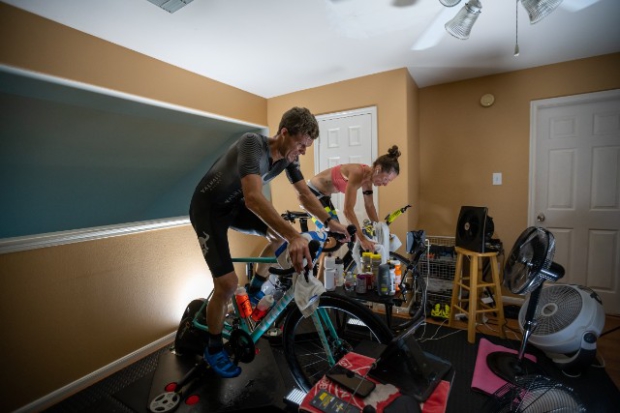Underestimating a vEveresting Attempt
In the absence of races this spring, there was a massive migration towards the challenge of cycling the same elevation as Mount Everest (29,029 feet or 8444 meters). Known as Everesting, cyclists and triathletes alike took up this massive challenge, with the biggest push coming on Memorial Day Weekend. Former pro mountain biker Rebecca Rusch led 890 athletes and subsequently raised $130,000 for COVID-19 relief, World Bicycle Relief and People for Bikes. Josiah Middaugh, Sam Long, Jocelyn McCauley and Amber Ferreira were some of the notable triathletes to complete an Everest quest. And the toughest of them all was pro cyclist Lachlan Morton, who provisionally set the record for the fastest completion time to Everest, only to have his result nixed due to a discrepancy in the elevation he climbed. Morton returned to the same Rist Canyon climb the following week and went three minutes faster than the previous week climbing 8840 meters in seven hours, 29 minutes and 57 seconds.
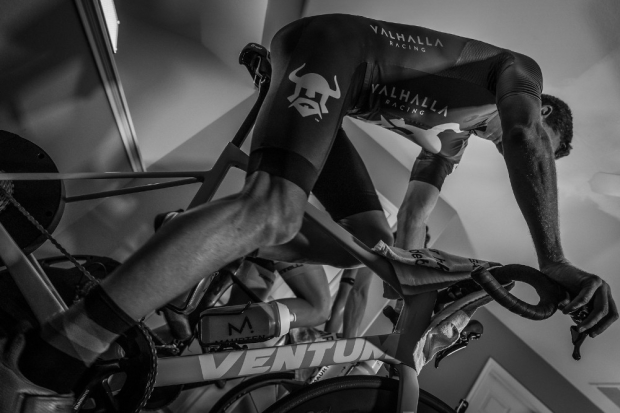
For those who spend their cycling time indoors on Zwift, you’ve likely noticed a growing number of riders with the tag “vEveresting” notating a rider attempting to tackle the same feat in the confines of their home set up.
As I tallied up miles on Zwift, the idea of a vEveresting attempt slowly started to captivate my imagination. I was in reasonably good climbing shape thanks to a head to head showdown racing Jana Richtrova up Alpe du Zwift, but it wasn’t until seeing industry friend (and Zwift staffer) Craig Taylor complete the challenge (on his birthday, no less), I decided it was time to give it a whirl. I’m no stranger to tackling impulsive endurance challenges, like running through the Waipio Valley or giving the Alohaman Xtreme course a trial run for my race director friend, Aaron Palaian. How difficult could this really be? I figured if I just ratcheted back enough on my pacing the effort would be similar to an Ironman-like day, only concentrated to time in the saddle.
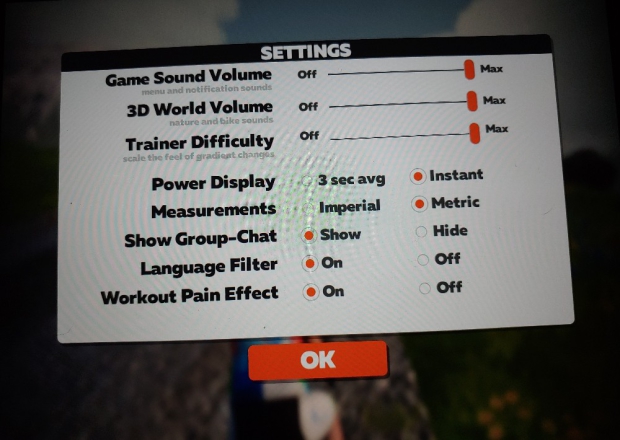
There are some ground rules for both Everesting and vEveresting established by Hells 500, the Melbourne-based club, credited with creating and recording Everesting pursuits. Whether you decide to tackle the challenge indoors or outside you can read about those rules on their site. A few of the most basic rules for vEveresting can also be found on a dedicated page living on Zwift's site. Amongst other rules, the effort must take place on Zwift, the trainer setting must be at 100% difficulty (as they say, “you’ve got to feel the hill”), and you need to choose a single hill segment to tally up the elevation.
Depending on your perspective, there are advantages and disadvantages in choosing to tackle a vEverest.
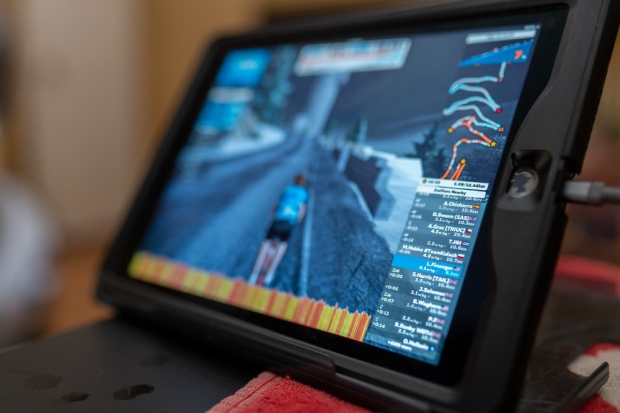
Keeping in mind the ground rules, you can only choose one hill. Similar to picking your favorite outdoor route, you can choose a climb on Zwift’s platform depending on your taste. Though Alpe du Zwift is one of the steepest continuous climbs on Zwift, it also gains over 1000 meters each ascent and *only* needed to be climbed 8.5 times to reach the 8848 meter total elevation. On paper, this was far more attractive to me than climbing a different hill 20, 30 or 60 times! A side benefit after completing each rep indoors is getting to freewheel back down the mountain to the base of the climb. This gives the legs a few minutes to rest, let’s you fuel up, and even change into a dry kit or socks if so inclined! Admittedly, this part feels a bit like cheating versus an outdoor Everesting attempt where you’re forced to maintain focus and control of your bike on the descents.
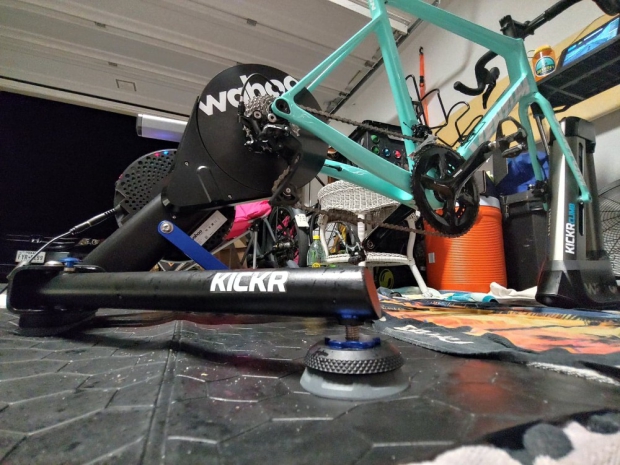
I did a few things right and a few things wrong.
Wahoo sent out their newest generation KICKR smart trainer so I had my loaner Ventum NS1 road bike rigged up to that. I got my hands on this new KICKR a few weeks earlier and had ridden with it up both Ven-Top and Alpe du Zwift a few times. I found I changed my riding style from staying seated on climbs to now preferring to hit the climbs out of the saddle. I think this was partially due to the trainer’s AXIS pods serving as feet on each of the three legs providing a climbing experience more akin to what you’d get riding outside. I also used Wahoo’s CLIMB which provides additional side-to-side rotation while also adjusting the pitch of the bike to match the pitch of the road on the climb.
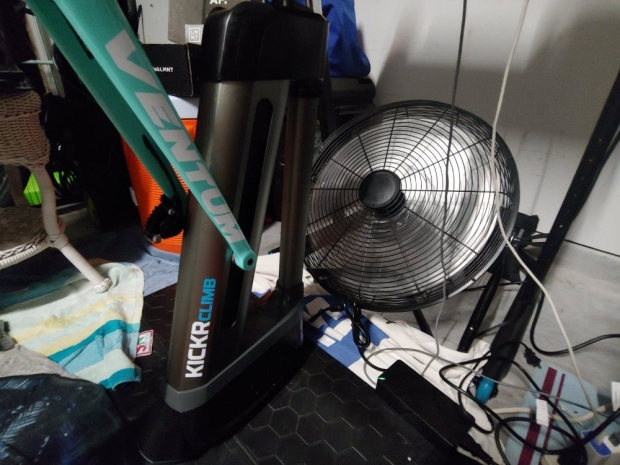
Likely the biggest mistake I made out of the gates was not buying a third fan to stay cool. What Houston lacks in hilly terrain, it makes up for in heat and humidity and tackling this challenge in the garage did not provide much in the way of relief from the stifling conditions. I started overheating about midway through the first rep and continued to simmer from that point onward.
Not wanting to disrupt my family’s schedule, I also chose not to start the challenge until well after dinner and my daughters were into watching a movie, beginning the effort around 9PM. I had promised my wife the next day would not be ruined with me being out of commission so I was also committed to take my daughter to her 8AM swim practice the next morning. I put a parameter on the time I was going to give myself to try and complete the effort. I had 10 hours in mind. That’s what it had taken Craig, and seeing as how we have comparable Ironman best times, I figured whatever he could do, I could do. That proved to be a fatal calculation. It sounds like a lot of time but I can attest the time disappears quickly. And there are no do-overs. Starting out in the evening had its advantages: no distractions and I was pretty wired out of the gates. Yet by 2:30AM, I had hit a wall, and felt like a zombie, tapped both physically and mentally.
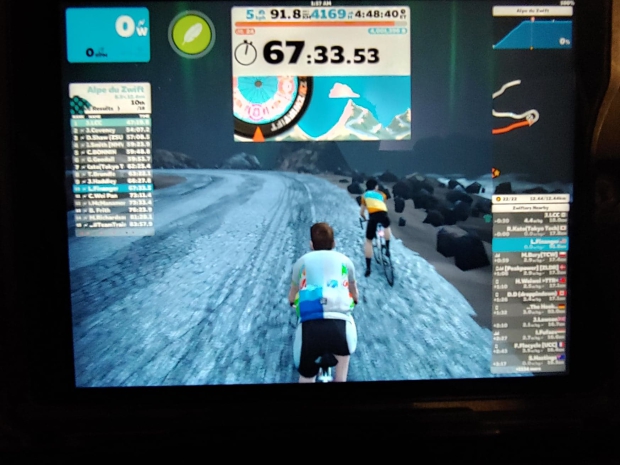
I knew I was in trouble near the end of the third trip up the climb. I realized in that rep I simply hadn’t put enough training miles in the bank to finish the challenge in the time I’d allotted for myself. Physically I started to fall apart. I was overheating, my legs were starting to cramp, and my stomach didn’t want any of the food or nutrition I had on hand. I remember thinking Craig had made the challenge look effortless as he ticked off each rep in 55-60 minutes, completing the herculean effort just under 10 hours. When my time ticked over an hour in that rep, I deflated.
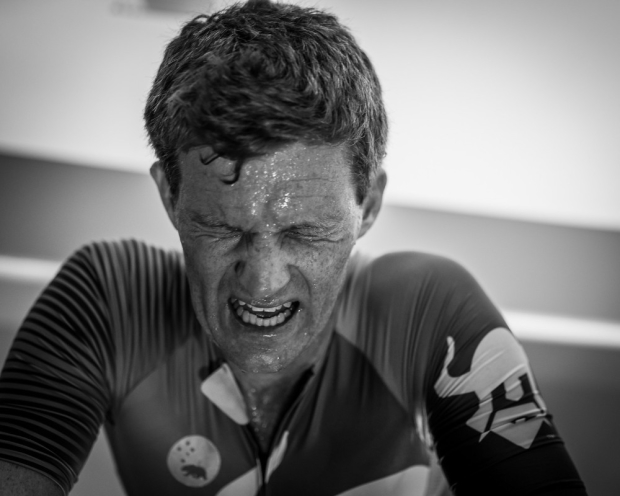
Mentally I checked out. I wasn’t willing to walk the marathon so to speak. Or to give another analogy, when taking the right hand turn in Kona to go up Palani Road, you are faced with a decision: venture onto the Queen K Highway – the point of no return – or hook a u-ie and take the bailout option 300 yards away to your hotel room at the King K. On this day, or rather in the middle of the night, I chose the latter. An air conditioned house, a shower, and an inviting bed were merely a few steps away and I threw in the towel.
I simply had not respected the mammoth effort a vEveresting attempt requires. I cried uncle at the 5.5 hour mark, after climbing 14,500+ feet, 4.5 trips up and down Alpe du Zwfit, only half of what was needed for a full vEveresting. I’m massively impressed by the fitness and grit by those who make it all the way up and back down again. You’ll not find me pulling a Lachlan Morton and attempting it again in the upcoming week, or anytime in the near future for that matter, but I’ll continue to applaud all those who put themselves to the test.
Photos #1, #3, #7 by @DigitalKnightProductions




